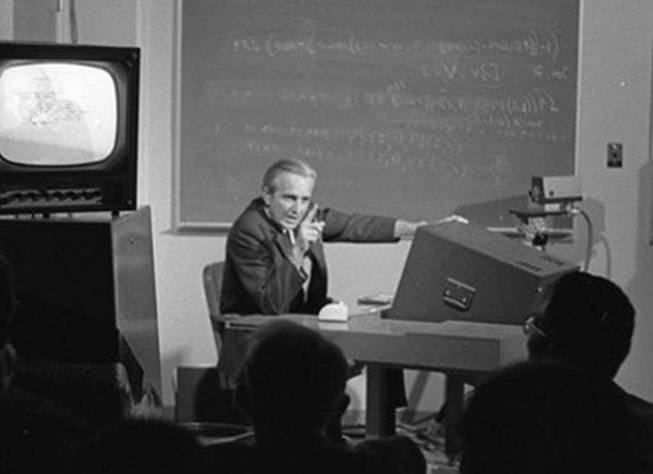Conceived by Douglas Engelbart and developed by him and colleagues at the Stanford Research Institute (SRI), the groundbreaking computer framework known as oN-Line System (NLS), jointly funded by ARPA and the Air Force, evolved throughout the decade. In what became known as "The Mother of All Demos"—because it demonstrated the revolutionary features of NLS as well as never-before-seen video presentation technologies—Engelbart unveiled NLS in San Francisco on December 9, 1968, to a large audience at the Fall Joint Computer Conference. Engelbart's terminal was linked to a large-format video projection system loaned by the NASA Ames Research Center and via telephone lines to a SDS 940 computer (designed specifically for time-sharing among multiple users) 30 miles away in Menlo Park, California, at the Augmentation Research Center, which Engelbart founded at SRI. On a 22-foot-high screen with video insets, the audience could see Engelbart manipulate the mouse and watch as members of his team in Menlo Park joined in the presentation.
With the arrival of the ARPA Network at SRI in 1969, the time-sharing technology that seemed practical with a small number of users became impractical over a distributed network. NLS, however, opened pathways toward today’s astounding range of information technologies.
